Types of House Paint

The paint business has come a long way from its early days of producing paints with clay, berries, and flowers and binding them with cow's milk, eggs, and animal fat.
There are now more finishes, cleaner binders, and nearly infinite color options. Knowing the various types of house paint is essential to choosing wisely because there are a lot of options when it comes to painting.
In addition to knowing different types of house paint, you need to be aware of the different characteristics of each, so you can choose the best one for your house.
Acrylic Paints
Acrylic paints are a kind of water-based paint composed of pigments, water, and acrylic resin. They are well-known for sticking to a range of media, including canvas, paper, metal, and wood, and for drying quickly.
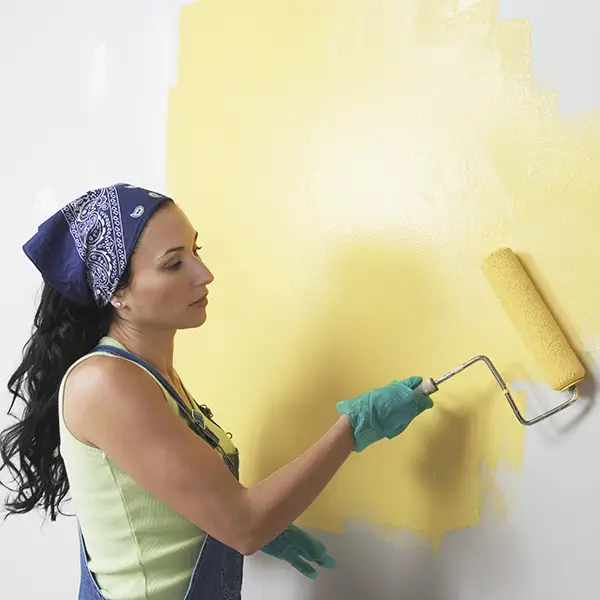
image sourced from here
A wide variety of effects, from delicate washes to heavy impasto strokes, may be produced with acrylic paints. Professional and novice painters alike favor them since they are also rather simple to tidy up after.
The majority of acrylic paints start water-based but dry to become water-resistant.
Acrylic paint's pigment is an essential ingredient that determines the paint's color and opacity. It is made up of microscopic solid particles suspended in an acrylic medium made of water, acrylic resin, and other ingredients.
Both synthetic and natural pigments are available. Synthetic pigments are created by humans, whereas natural colors come from minerals, plants, or animals.
Synthetic pigments are usually used in acrylic paints because they are more reliable and come in a larger variety of hues.
An essential ingredient in acrylic paint that keeps the pigment particles together and enables them to stick to a surface is the binder.
Usually, a polymer resin that dissolves in water is used to make it, such as vinyl or acrylic resin.
The water in the paint evaporates during application, leaving behind a polymer layer that is flexible and resistant to water, which holds the pigments to the surface.
Because acrylic paint binders are flexible, the paint may expand and contract in response to temperature changes without peeling or breaking.
Additionally, they offer adherence to a broad range of materials, such as metal, paper, canvas, and wood. The longevity, gloss level, and drying time of an acrylic paint can all be impacted by the type of binder used in that paint.
For more information about acrylic paints, click here.
Enamel Paints
Paints that are composed of pigments, resins, and solvents are known as enamel paints.

image sourced from here
They are well-known for being strong and having a glossy finish, which makes them perfect for usage on a range of materials, including plastic, metal, and wood.
Although enamel paints that are air-dried take longer to cure, they are less prone to turn yellow over time. A dedicated oven is needed for baked enamel paints, which cure more rapidly and give a more robust surface.
Enamel is an oil-based paint with a solvent base that cures into a hard, shell-like layer. It is well-liked for painting houses' exteriors.
Additionally, be wary of some oil-based enamel paints' strong scents and protracted drying periods.
The following are some essential qualities of enamel paints:
- Durability: The resilience of enamel paints to deterioration is well-known. They are frequently applied to surfaces like furniture and cabinets that are used frequently.
- High-gloss finish: High-gloss finishes are visually appealing and simple to maintain when painted using enamel paints.
- Numerous colors and finishes: Enamel paints come in a multitude of hues and finishes, which makes them appropriate for a wide range of tasks.
- Simple to apply: Using a brush or roller, enamel paints are usually simple to apply.
If you need more information about enamel paints, click here.
Latex Paints
Pigments, binders, and water-based liquids are the ingredients of this water-based paint. It's excellent for interior work because it's non-toxic and long-lasting.
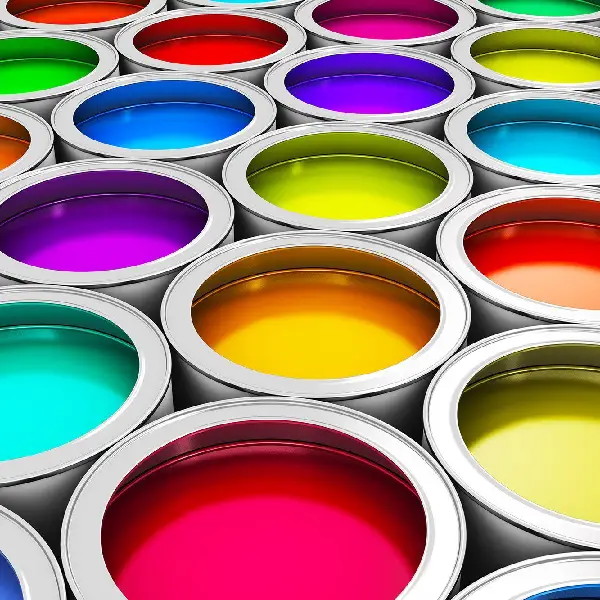
image sourced from here
To suit your particular house painting job, a range of sheens, from flat to high-gloss, are available for selection.
Like acrylic, latex paint is water-based and does not really contain latex. Due to its low cost, quick drying time, and widespread use on interior walls and ceilings, latex paint has gained popularity.
Naturally, you should be aware of its limits when using it on uneven surfaces, such as concrete.
They are renowned for being long-lasting, fading- and moisture-resistant, and simple to apply. Latex paints come in a variety of colors and finishes and are frequently used for painting tasks both indoors and outside.
The following are some essential qualities and benefits of latex paints:
- Durability: High-traffic areas and surfaces that undergo wear and tear are perfect candidates for latex paints because they provide a resilient, flexible layer that is resistant to chipping, cracking, and peeling.
- Moisture Resistance: Because latex paints are resistant to humidity and moisture, they may be used in kitchens, bathrooms, and other damp environments.
- Fade Resistance: The pigments in latex paints are made to resist fading, so colors remain true and brilliant over time—even in the presence of sunshine.
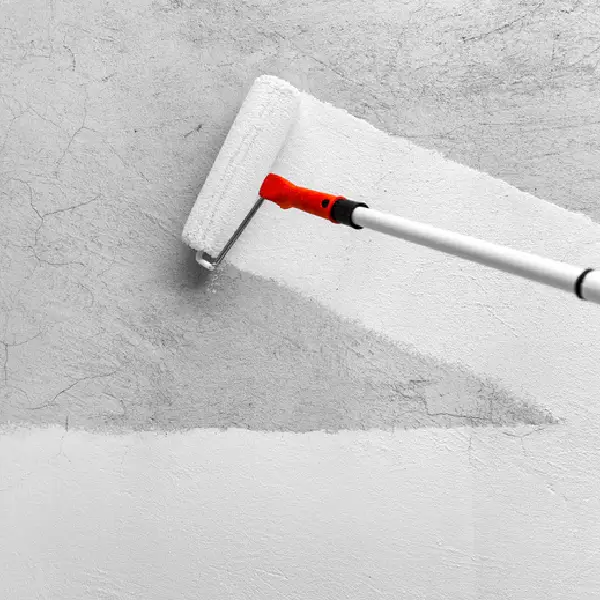
image sourced from here
- Low VOC: A lot of latex paints have low volatile organic compounds (VOCs), which makes them safer to use indoors and more ecologically friendly.
- Easy Application: Water-based latex paints are simple to use, needing little cleaning and preparation. They can be sprayed on, roller applied, or brush applied.
- Fast Drying: Because latex paints dry quickly, painting work may be finished more quickly.
- Versatility: Latex paints work well on a range of surfaces, such as trim, walls, ceilings, and even some kinds of furniture.
If you need more information about latex paints, click here.
Primer
Although primer serves as an adhesive for the final layer, it is not painting, so it can’t be included as a different type of house painting.

image sourced from here
The sticky surface created by priming guarantees that subsequent applications adhere to it.
In addition, it conceals seams, inhibits prior colors from showing through, helps cover wood grain and knots, and lessens the need for extra finishing applications.
The following are some compelling arguments for using a primer before painting at all times:
- Enhances Adhesion: Primer makes a solid connection between the paint and the surface, preventing paint from peeling or chipping and promoting good adhesion. This is particularly crucial for glossy, plastic, and other smooth, non-porous surfaces where paint may not adhere as well without priming. It also cuts down on total paint time.
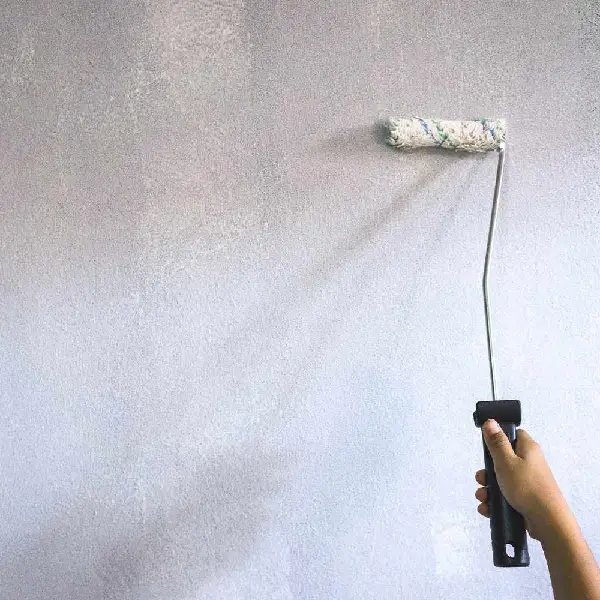
image sourced from here
- Prevents Bleeds and Stains: The primer functions as a shield to stop markings and stains from seeping through the paint. This is very helpful for painting over stained surfaces, including those with nicotine, water, or knots in wood. These stains are sealed with primer, which keeps them from penetrating the paint.
- Offers Uniform Coverage: By filling in any blemishes or abnormalities, primer aids in the creation of a uniform surface. This guarantees that the paint applies evenly and smoothly, producing a finish that looks professional. Additionally, primer can aid in the concealment of tiny surface flaws like dents or fissures.
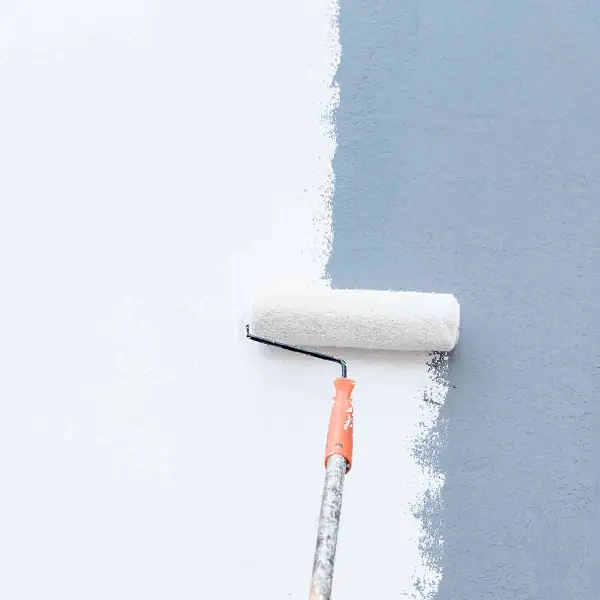
image sourced from here
- Improves Color Brightness: Primer can improve the paint color's depth and brightness. Primers provide richer, more vivid colors by giving paint a more stable, uniform surface on which to adhere and reflect light.
- Increases Paint Durability: By shielding the surface from abrasion, primer helps to increase the lifespan of your paintwork. It establishes a shield against UV radiation, moisture, and other elements of the environment that might eventually lead to paint deterioration. You can make sure that your paintwork lasts longer and keeps its original look by applying primer.
Oil-Based vs. Water-Based Paint
The main distinctions between different types of house paint for walls that are water-based and oil-based are broken down as follows:
Composition
Pigments suspended in oil, usually alkyd resin or linseed oil, make up oil-based paints.
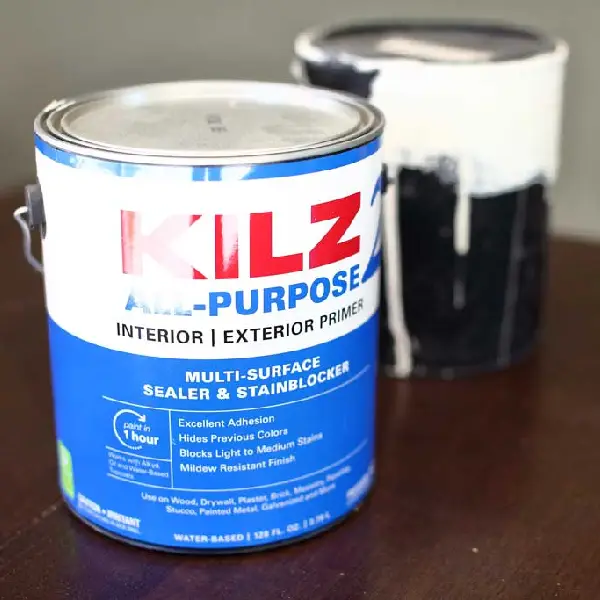
image sourced from here
Pigments are dissolved in water to create water-based paints, commonly referred to as latex or acrylic paints.
Properties
Paints based on oil have a robust, long-lasting finish and are well-known for being resistant to wear and dampness. They may be applied smoothly and evenly to surfaces inside and outside of buildings.
While they are quicker to cure and simpler to clean up after, water-based paints are not as durable as oil-based paints. They are more ecologically friendly since they typically have less volatile organic compounds (VOCs) and a low odor.
Usage
Because oil-based paints have a strong smell and require solvents to clean up after use, adequate ventilation is necessary. They can be sprayed on, roller applied, or brush applied.

image sourced from here
Because water may be used to dilute water-based paints, they are simpler to apply and clean up after. They are usually applied using a roller or brush.
Drying time
Different types of house paint colors that are oil-based take longer to dry than water-based paints. It may need many hours or perhaps several days for them to fully dry.
Water-based paints are more practical for urgent work since they cure significantly faster—typically in a few hours.
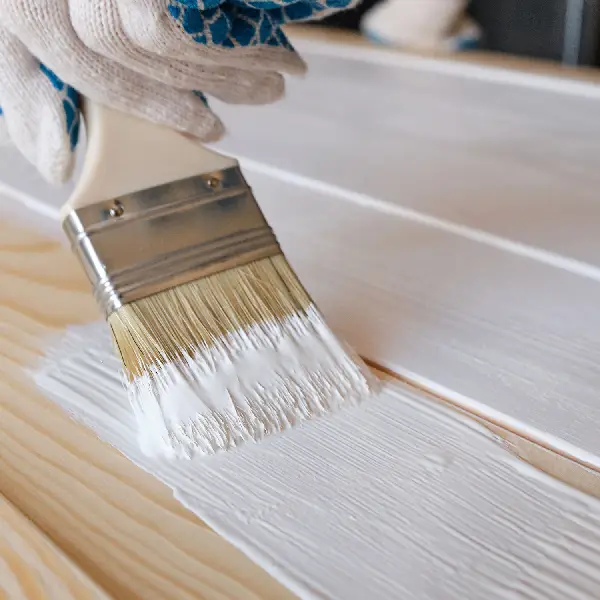
image sourced from here
In conclusion, water-based paints are easier to apply, easier to clean up after, and more ecologically friendly than oil-based paints. Water-based paints are suggested for walls and oil-based paints for high-traffic surfaces (exteriors, flooring, trim).
Oil-based paints offer longevity and resilience to moisture. The kind of surface intended finish, and project-specific needs all influence the decision between oil-based and water-based paints.
FAQs
How many types of house paint are there?
Two. Water-based and oil-based paints are the two most basic types. Most types of house paint that are used on trim, doors, interiors, or exteriors of homes are either oil-based paint mixes, acrylic paint, or water-based latex paint solutions.
Which type of paint is best for the exterior of a house?
Acrylic paint's suppleness makes it perfect for painting jobs outside. For siding composed of wood, metal, or fiber cement, acrylic exterior paints are the most resilient and long-lasting options.
What are the 4 main types of paint?
There are four main types of house paint: oil paint, acrylic paint, watercolor paint, and gouache paint.
Conclusion
As you noticed, there are two main types of house paint: oil-based and water-based paints acrylic and latex paints are included in these two categories.
Of course, you cannot just pick one of these types and paint your house. You should first consider your needs, the surface type, and the desired finish so that you can get the best results.
- In this post:
- Acrylic Paints
- Enamel Paints
- Latex Paints
- Primer
- Oil-Based vs. Water-Based Paint
- FAQs
- Conclusion



